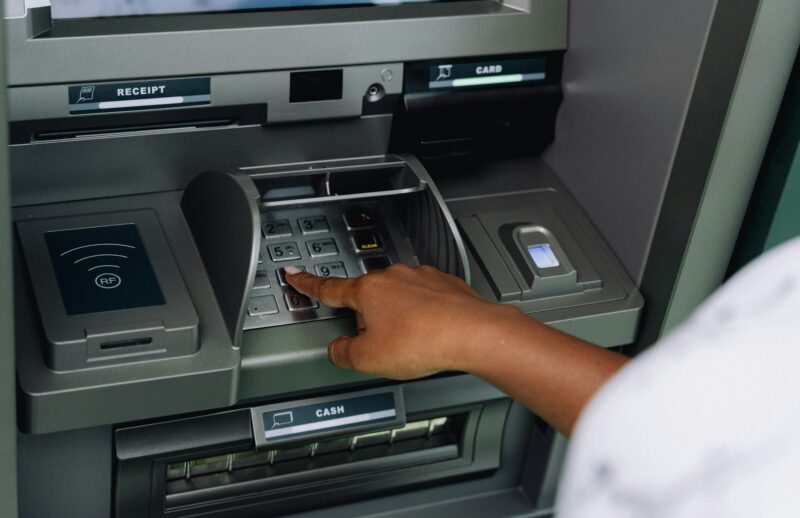Data-Driven ATM Management: Harnessing Insights for Better Decision-Making with Brink’s

Brink’s Insight Center uses data-driven analysis to optimize ATM management and improve performance uptime for your ATM estate. Our cloud-based ATM management solution empowers banks and financial institutions to make more informed decisions by providing in-depth data analytics and real-time performance insights, all from a single portal.
Brink’s has full visibility of your entire ATM estate
You can’t manage what you can’t measure. Brink’s Insight Center gives unparallelled visibility and a holistic view into what’s happening at the ATM. Banks and financial institutions do not generally have the comprehensive granularity of software and infrastructure to achieve such detailed data insights into their ATM operations.
Brink’s has full visibility into all areas of our customers’ ATM portfolio through the Brink’s Insight Center, enabling us to pull data insights about anything and everything happening at the individual terminals. This can include errors and status of the ATM as a whole, or individual components, such as the dispenser, card reader, PIN pad or screen.
Brink’s vast experience with all major ATM manufacturers has given us the ability to cut through the noise and get to the signal. Brink’s Insight Center uses a technological tool set that will correlate events and status messages from the ATM to get to the root cause of what’s occurring. Instead of seeing seven or eight different issues, our technology will condense them into one actionable message and report that makes the issue(s) dispatchable and fixable. When an ‘incident’ occurs, it can be either managed remotely or dispatched to the appropriate maintenance responsibility in the field. Not only are problems resolved quickly and efficiently, it also reduces operational costs by streamlining fault resolution and therefore minimizing downtime.
Actionable insights from data analytics
By leveraging in-depth historical data and real-time insights, Brink’s Insight Center uses advanced analytics to predict and prevent ATM failures, ensuring optimal performance across your entire ATM network.
Brink’s Insight Center’s visibility of ATM data enables trend analysis to identify what is really happening with your ATM estate, with failing equipment and fraud being common challenges. We use this information not just for spot fixes, but also to help with preventative maintenance by identifying patterns in component failure or setting optimized maintenance intervals.
The reporting system can identify fraud at the ATM or detect a pattern in hardware faults that may be happening regularly. For example, the system can flag that there may have been a third card reader fault at a terminal in a month. Or, if several ATM dispensers in one location are having a similar issue, we can use these insights to detect if there are underlying second-line maintenance issues in that region.
With the information available, Brink’s can also optimize ATM estates by identifying underperforming ATMs, whether that be due to their location, DCC (dynamic currency conversion) variables or surcharge rates, which can be evaluated with A-B testing.
Data security is paramount
Brink’s Insight Center follows strict practices for customer data that is managed and stored on the platform. Data is captured and kept only for IT operations management functions on devices/applications that Brink’s Insight Center monitors and manages in a network, ensuring the highest levels of security at all times.
Maintaining SLAs
The data that Brink’s acquires from our monitoring and reporting tool set will help to manage and maintain the Service Level Agreements in a customer’s contract. Proactive monitoring and reporting can address any issues before they breach performance targets.
Brink’s can also evaluate the performance of customers’ third-party maintenance providers, beyond simply supplying details of any errors and when they were fixed. Brink’s technology can offer detailed error analysis and a full breakdown of the repair status, enabling continuous improvement of performance and uptime. If Brink’s is conducting second-line maintenance, we use this data to measure the effectiveness of our own performance to maintain high levels of customer service.
Why Brink’s?
Brink’s is already close to your cash. We provide outsourcing services for 300,000 ATMs around the world, while also operating more than 135,000 ATMs globally. We have significant expertise and scale undertaking 1+ billion ATM transactions a year.
Brink’s analytical capabilities and strategic approach add value through informed decision-making. By taking the ATM data and turning it into actionable information, Brink’s improves efficiencies and performance uptime, resulting in greater customer satisfaction.
For more information, get in touch with a local ATM Outsourcing expert in your region.
Frequently Asked Questions
Can banks and FIs manage their ATM data in-house?
Financial institutions generally cannot manage their ATMs to the same extent as Brink’s, who have full visibility via Brink’s Insight Center for a more holistic view of their ATM operations.
What can Brink’s see?
Brink’s Insight Center has all the software and tools necessary to view many areas of the customers’ ATM business. We see all of our clients’ estates from one portal and have oversight of the clients’ ATM network as a whole. We can therefore take actionable insight from the data we have already from other areas of the ATM business, such as Cash in Transit, cash forecasting and monitoring.
What can Brink’s do with ATM data?
Brink’s AMS delivers unparalleled ATM management through Brink’s Insight Center. By harnessing real-time data and predictive analytics, we empower financial institutions to optimize ATM performance and cash utilization. By identifying and resolving issues proactively, you can maximize uptime ATM, placement, cash forecasting and service levels for enhanced customer satisfaction.
How does Brink’s mitigate risk?
We can proactively detect and prevent fraud, theft and vandalism through advanced monitoring and reporting technology.







